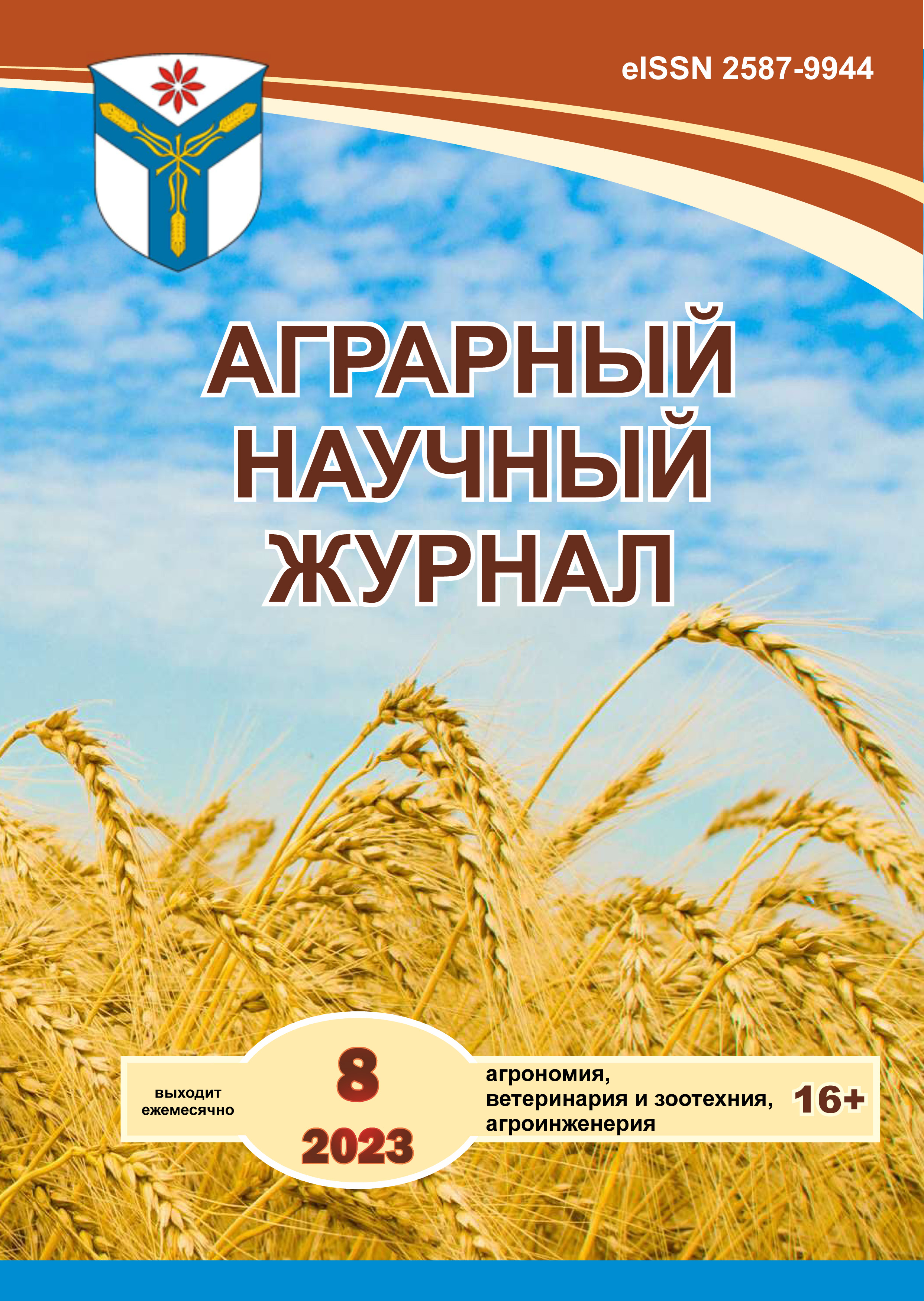The application of mineral fertilizers and bacterial preparations in the cultivation of oil flax on ordinary chernozem in the conditions of the Lower Don
DOI:
https://doi.org/10.28983/asj.y2023i8pp4-9Keywords:
oil flax, ordinary chernozem, bacterial preparations, mineral fertilizersAbstract
Field experiments were carried out in 2020-2022. on chernozem soils in the Azov zone of the Rostov region. They cultivated a variety of oilseed flax Heavenly. The predecessor is winter wheat. The following types of mineral fertilizers were used in the experiment: ammonium nitrate (34.4 % N), ammophos (12-52), potassium chloride (K2O65). The use of mineral fertilizers was carried out in the autumn period for plowing the soil, in the spring for continuous cultivation and for sowing oil flax. Bacterial preparations are intended for the treatment of flax seeds in the pre-sowing period: Mizorin, Flavobacterin, Extrasol. Average for 2020-2022 the maximum increase from the use of agro-chemicals was achieved in the variant with the introduction of nitrogen-phosphorus fertilizers under continuous cultivation at a dose of N60P60. The increase in the yield of flax oilseeds was 0.74 t/ha, or 51.7 % compared to the control. A high effect was achieved from the treatment of seed material with the biological preparation Extrasol (200 ml per sowing rate of seeds). The increase in the yield of oilseeds reached 0.19 t/ha to the variant without the use of fertilizers. With the combined use of fertilizers and bacterial preparations, the best effect on the yield of flax was achieved from the treatment of seeds in the pre-sowing period with bacterial preparations Flavobacterin and Extrasol. The increase in comparison with the control variant was 0.51 t/ha, or 31.5 %. On average, over 2 years, the largest oil yield in the crop was obtained in the variant using N30P30. The increase in oil harvest was 371 kg/ha, or 63.4 %.
Downloads
References
Авдеенко А.П., Зеленки Р.Н. Влияние гербицидов на засоренность посевов льна масличного // Современные наукоемкие технологии – основа модернизации агропромышленного комплекса: Материалы Междунар. науч.-практ. конф. Пос. Персиановский, 2021. С. 102-105.
Нужнов И.В. Применение минеральных удобрений и бактериальных препаратов под лён масличный на черноземе южном // Инновации в технологиях возделывания сельскохозяйственных культур: материалы Междунар. науч.-практ. конф. Пос. Персиановский, 2016. С. 54-57.
Доспехов Б.А. Методика полевого опыта. М.: Колос, 1979. 416 с.
Безуглова О.С. Почвы Ростовской области. Ростов н/Д., 2011. 127 с.
Щерба С.В., Юдин Ф.А. Методика полевого опыта с удобрениями // Агрохимические методы исследования почв. М., 1975. С. 526-584.
Юдин Ф.А. Методика агрохимических исследований. М.: Колос, 1980. 366 с.
Downloads
Published
Issue
Section
License
Copyright (c) 2023 The Agrarian Scientific Journal

This work is licensed under a Creative Commons Attribution-NonCommercial-NoDerivatives 4.0 International License.








